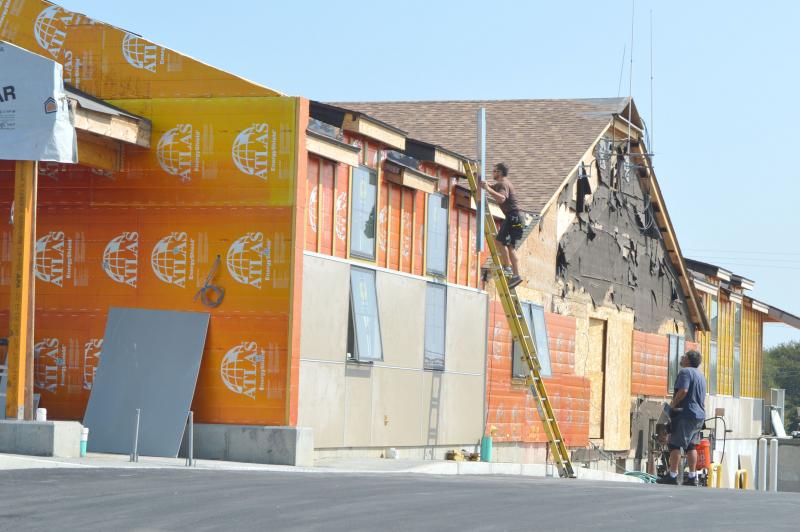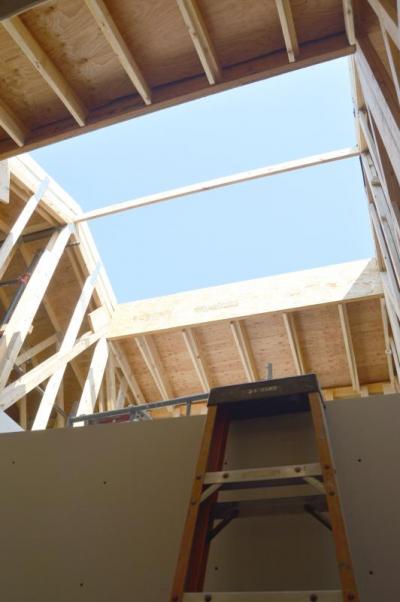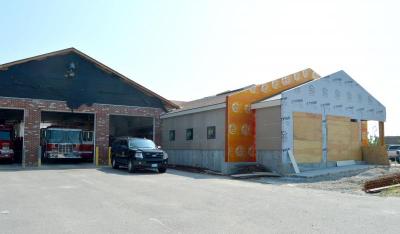Fire District 3 station expansion nearing completion
The sounds of construction workers hammering and sawing can be heard at Station 1 in Fire District 3. In about two months’ time, the station’s new expansion will be completed, enabling more overnight firefighters to respond to the district’s high call volume.
Originally built in 1982, Station 1, located on 140 Cross Road, is getting a $3.3 million one-story renovation, complete with a new lobby, training space, common area and bunks for nine firefighters.
District 3 is responsible for North Dartmouth, starting 200 feet south of Allen Street. Station 2 is located at 1140 Hixville Road and Station 3 is at 254 State Road.
“Fire District 3 is very diverse,” said Fire Chief Richard Arruda. “We have a large commercial base with a lot of medical [buildings] on Faunce Corner Road. We also have three public schools, two private schools, UMass Dartmouth, the [Bristol County] House of Corrections and a large residential base as well. We’ve got a little bit of everything.”
District 3 is also the only district in Dartmouth that has full-time staffers, of which there are seven: five firefighters, an administrative assistant and the fire chief. There are 42 on-call, per-diem employees.
“We need additional people overnight because of our call volume. We need to have a minimum of three firefighters to respond at any moment’s notice. To do that, we need more sleeping quarters,” said Arruda.
When he joined the fire department in 1987, District 3 was averaging 300 calls a year. He said the number has risen to about 800.
Because Station 1 is also used as the main hub for training within the district, the renovations include training and meeting rooms. Minor upgrades were made to the existing facility, like renovations to the garage doors, but the bulk of the changes include additions to the front and back of the facility totaling 4,800 square feet.
The addition toward the back of the building will be for firefighters and includes the bunk area, showers, decontamination rooms for gear and the training rooms. The addition toward the front of the building will be for the public and house administrative staff and a glass lobby for building owners and the public to come for permits and complete other business.
“We could have built it smaller, but 30 years from now, we would probably outgrow it again. We outgrew this building fairly quickly. Instead of the building having to expand in the future to the size of the community, we can grow into the building,” said Arruda.
In the meantime, he said the additional bunk space will be helpful if Dartmouth is hit with another intense winter. He said that, in the past, firefighters would be stranded for up to three days at the station and have to sleep on the floor.
Arruda said having full-time firefighters on hand is especially important at Station 1 considering that it covers an area with the heaviest amount of traffic.
“We have medical facilities where people cannot evacuate. If a fire alarm goes off in those buildings and there’s a smell of smoke, people can’t evacuate because of the medical condition they’re in,” he said. “To have firefighters come from home, try to drive through traffic in Dartmouth, get to the station and then get to those medical buildings… it just doesn’t work anymore.”
Arruda said he is currently working to gather data to determine how many additional firefighters the station will need. Currently, no positions have been funded.
“I’m doing a study right now, looking at the district – the calls, the work that we do every day. Once I complete that study, I’ll be able to come forward to the Prudential Committee with what I believe is necessary.”
He said the new space will be for more than full-time staffers.
“One thing we wanted to make sure of is that we were accommodating the 45 firefighters we have all together. This is a place where they come and train,” said Arruda.



















